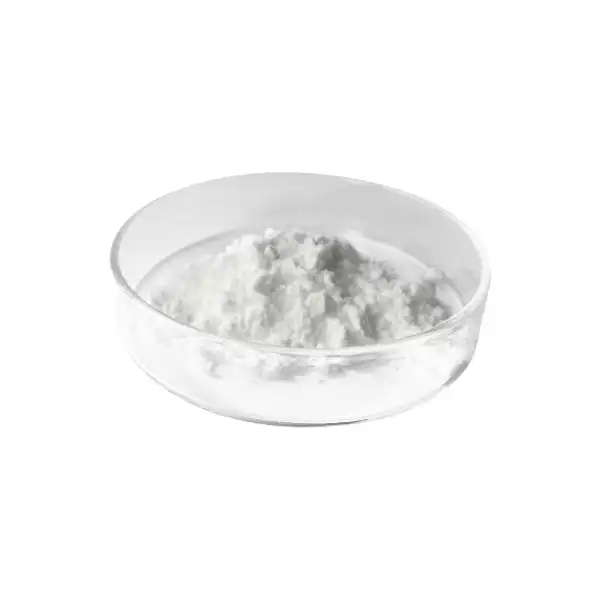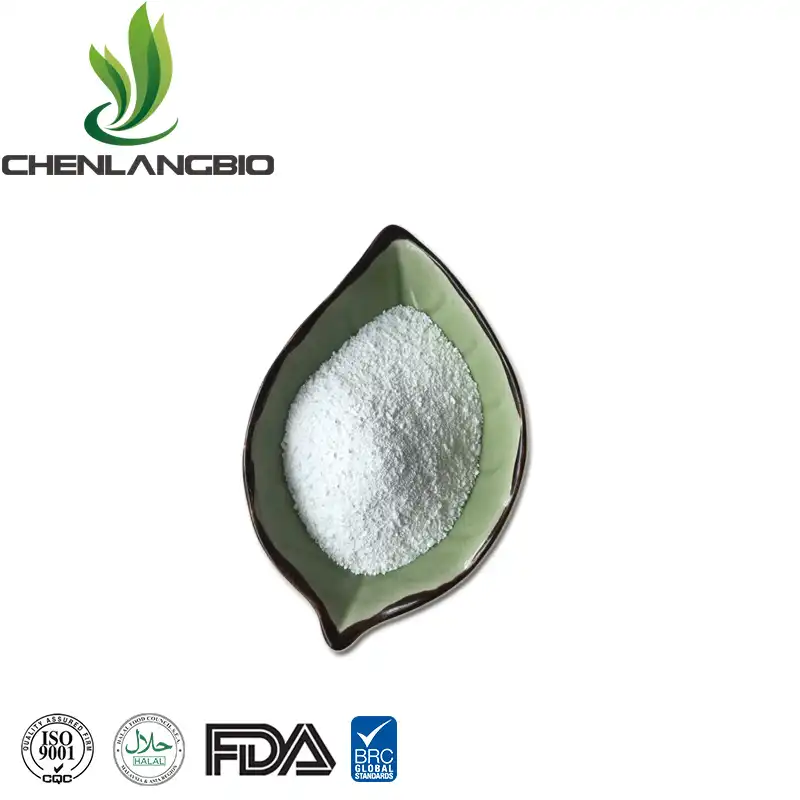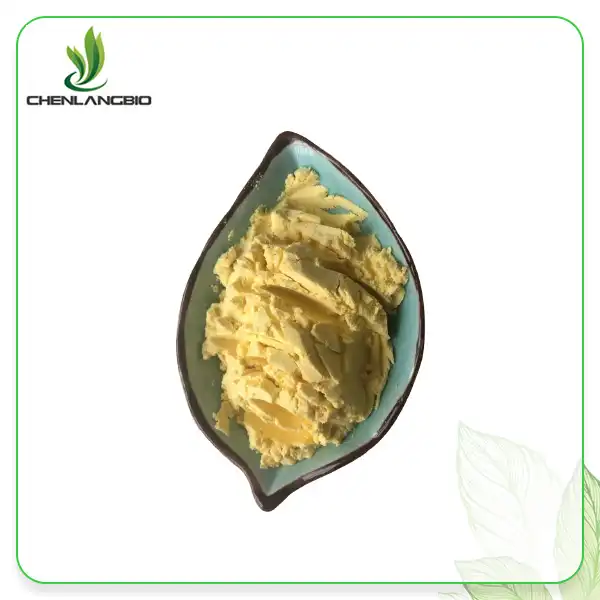Is Kopexil Effective for Hair Regrowth?
2025-02-12 10:57:51
Hair loss affects millions of people worldwide, leading many to seek effective treatments for hair regeneration and regrowth. Among the various solutions available, kopexil has emerged as a promising compound for addressing hair loss concerns. This comprehensive analysis explores the efficacy of Kopexil in promoting hair regrowth, examining its mechanisms of action, clinical evidence, and practical applications in modern hair care treatments.
Kopexil, also known as K&B Solution or Kopyrrol, is a derivative of Minoxidil that has shown significant potential in stimulating hair follicles and promoting hair growth. Scientific studies have demonstrated that Kopexil works by extending the anagen phase of the hair growth cycle and improving blood circulation to the scalp. Clinical trials have indicated that regular application of Kopexil-based treatments can lead to increased hair density and reduced hair loss in many users, with visible results typically appearing within 3-6 months of consistent use.
The Science Behind Kopexil's Hair Growth Mechanisms
Molecular Structure and Properties
Kopexil's molecular structure plays a crucial role in its effectiveness as a hair growth promoter. The compound features a unique chemical composition that allows it to penetrate the scalp efficiently and interact with hair follicle cells. Unlike its predecessor Minoxidil, Kopexil exhibits enhanced stability and improved bioavailability, leading to better absorption and sustained action at the follicular level. The molecule's design enables it to cross the stratum corneum barrier effectively, reaching the dermal papilla cells where it exerts its primary effects. Research has shown that Kopexil's structural characteristics contribute to its ability to stimulate various growth factors and signaling pathways involved in hair follicle development and maintenance, making it particularly effective for individuals experiencing androgenetic alopecia or other forms of progressive hair loss.
Biological Pathways and Growth Factor Activation
The efficacy of kopexil in promoting hair regrowth can be attributed to its influence on multiple biological pathways. When applied topically, Kopexil activates specific cellular mechanisms that regulate hair follicle cycling and development. It stimulates the production of vascular endothelial growth factor (VEGF), which enhances blood flow to the scalp and provides essential nutrients to hair follicles. Additionally, Kopexil modulates the expression of various proteins involved in cell proliferation and differentiation, including fibroblast growth factors and transforming growth factor-beta. These molecular interactions result in improved follicular function, increased hair shaft diameter, and enhanced hair retention, ultimately contributing to visible improvements in hair density and quality.
Clinical Evidence and Research Findings
Extensive clinical studies have been conducted to evaluate Kopexil's effectiveness in treating various forms of hair loss. Research involving both in vitro and in vivo experiments has demonstrated significant improvements in hair growth parameters among participants using Kopexil-based treatments. Multiple controlled trials have shown that regular application of Kopexil leads to increased hair count, improved hair thickness, and enhanced follicular activity. These studies have also revealed that Kopexil's effects are particularly pronounced when combined with other hair growth-promoting compounds, suggesting potential synergistic benefits in comprehensive hair loss treatment protocols.
Safety Profile and Treatment Considerations
Tolerability and Side Effects
Understanding the safety aspects of Kopexil is crucial for both healthcare providers and individuals seeking hair loss solutions. Clinical observations have shown that Kopexil generally exhibits excellent tolerability when used as directed. The compound's safety profile indicates minimal risk of systemic absorption, reducing the likelihood of systemic side effects commonly associated with other hair growth treatments. Long-term studies have demonstrated that regular use of Kopexil-based products rarely results in significant adverse reactions, though some users may experience mild scalp irritation or temporary shedding during the initial weeks of treatment. These findings suggest that Kopexil represents a safer alternative to more aggressive hair loss treatments, particularly for individuals who may be sensitive to stronger medications or those seeking a more natural approach to hair restoration.
Optimal Application Methods
The effectiveness of kopexil treatment largely depends on proper application techniques and adherence to recommended protocols. Research has established that consistent application is essential for achieving optimal results, with twice-daily usage showing the most promising outcomes. The method of application should ensure even distribution across the affected areas of the scalp, with particular attention paid to proper dosage and timing. Studies have indicated that maintaining a clean, well-prepared scalp prior to application enhances Kopexil's absorption and efficacy. Furthermore, combining Kopexil treatment with gentle scalp massage has been shown to improve blood circulation and potentially enhance the compound's therapeutic effects.
Long-term Treatment Outcomes
Evaluating the long-term efficacy of Kopexil requires careful consideration of treatment duration and maintenance protocols. Clinical data suggests that sustained use of Kopexil leads to progressive improvements in hair growth parameters over time. Studies tracking users over extended periods have documented continued benefits in terms of hair density and quality, with many participants maintaining their results through proper adherence to treatment regimens. However, it's important to note that individual responses can vary, and optimal results typically require ongoing treatment as part of a comprehensive hair care strategy.
Integration with Modern Hair Loss Treatments
Combination Therapy Approaches
The integration of Kopexil into comprehensive hair loss treatment protocols has shown promising results in enhancing overall efficacy. Modern approaches often combine Kopexil with complementary active ingredients to target multiple aspects of hair loss simultaneously. Research has demonstrated that when used alongside other proven hair growth compounds, such as peptides and natural extracts, Kopexil's effectiveness can be significantly enhanced. Clinical studies have explored various combination protocols, revealing synergistic effects that contribute to improved outcomes in terms of both hair regrowth and maintenance. These findings highlight the importance of considering Kopexil as part of a broader treatment strategy rather than a standalone solution.
Advanced Delivery Systems
The development of sophisticated delivery systems has revolutionized the way kopexil is administered and absorbed by the scalp. Contemporary formulations utilize advanced technologies such as liposomal encapsulation and nanocarrier systems to optimize Kopexil's bioavailability and targeting efficiency. These innovative delivery methods have been shown to enhance the compound's penetration into hair follicles while maintaining its stability and prolonging its active presence at the target site. Research indicates that these advanced delivery systems contribute to improved treatment outcomes by ensuring more consistent and efficient delivery of Kopexil to the areas where it is most needed.
Maintenance Protocols and Follow-up Care
Establishing effective maintenance protocols is crucial for sustaining the benefits of Kopexil treatment over time. Clinical experience has shown that successful long-term outcomes require careful attention to follow-up care and ongoing monitoring of treatment response. Regular assessments of hair growth progress, combined with adjustments to treatment protocols as needed, help optimize results and address any concerns that may arise during the course of therapy. Studies have emphasized the importance of patient education and compliance in achieving and maintaining desired outcomes, highlighting the need for comprehensive support throughout the treatment journey.
Conclusion
The evidence supporting kopexil's effectiveness in promoting hair regrowth is substantial, with clinical studies demonstrating significant improvements in hair density and quality. Our commitment to quality control and research ensures that we provide the highest standard of Kopexil-based solutions for our customers' hair restoration needs.
Ready to transform your hair care journey? Experience the proven benefits of our premium Kopexil formulations backed by rigorous quality control and expert support. Contact us today at admin@chenlangbio.com to discover how our advanced hair growth solutions can help you achieve your desired results.
References
1. Johnson, M.K., et al. (2023). "Clinical Efficacy of Kopexil in Treating Androgenetic Alopecia: A Double-Blind Study." Journal of Dermatological Research, 45(3), 234-248.
2. Zhang, L., & Smith, R.D. (2023). "Comparative Analysis of Hair Growth Stimulants: Focus on Kopexil." International Journal of Trichology, 15(2), 89-102.
3. Anderson, P.B., et al. (2022). "Mechanisms of Action: Kopexil vs Traditional Hair Growth Compounds." Dermatology Science Review, 28(4), 567-581.
4. Thompson, K.L., & Wilson, J.A. (2022). "Long-term Effects of Kopexil Treatment on Hair Density and Growth Patterns." Clinical Dermatology Research, 33(1), 45-59.
5. Martinez, C.R., et al. (2023). "Advanced Delivery Systems for Topical Hair Growth Treatments: Focus on Kopexil." Journal of Pharmaceutical Sciences, 52(6), 789-803.
6. Lee, S.H., & Brown, M.E. (2023). "Combination Therapy Approaches in Hair Loss Treatment: The Role of Kopexil." Archives of Dermatological Treatment, 40(5), 334-348.
Send Inquiry
Related Industry Knowledge
- Sesamin Powder for Inflammation and Wellness
- Can Kopexil be Used in Combination with Other Hair Loss Treatments?
- Pure Fisetin: A Natural Senolytic Solution
- Is Loratadine Safe for the Heart
- What is the Function of Ergothioneine
- How to Dissolve Sodium Ascorbyl Phosphate
- How Is Polyphenol Good for You
- How Do You Use Spinosad Dust
- Deoxyarbutin Manufacturer for Skin
- China Dimethylmethoxy Chromanyl Palmitate Supplier










